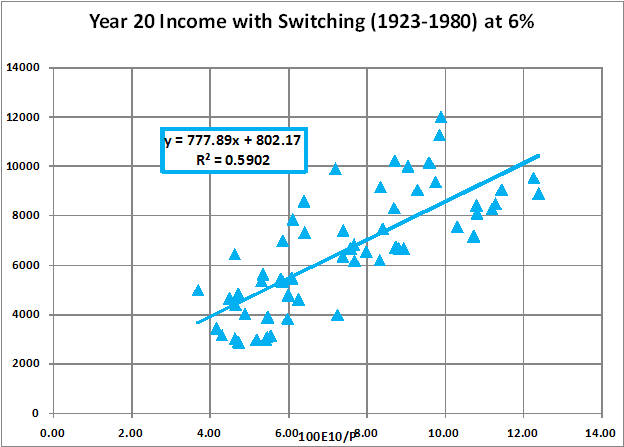|
Take 6% with Valuation Informed IndexingThis is what happens at Year 20 if you withdraw 6% of your portfolio’s CURRENT balance each year and adjust allocations according to P/E10. ConditionsI determined the (real) Year 20 balance after starting with $100000. I examined a portfolio with stocks and TIPS. I varied allocations in accordance with Professor Robert Shiller’s P/E10. The P/E10 thresholds were 10-18-30. The allocations were 100%-80%-20%-0%, respectively. These are optimized for a P/E10=14 Bear Market. The TIPS (real) interest rate was 2%. Each year, I withdrew 6% of the portfolio’s CURRENT balance. I plotted the Year 20 withdrawal amounts (in real dollars) using four year smoothing. GraphThis picture shows the Year 20 withdrawal amounts (smoothed over four years) versus the initial percentage earnings yield of the S&P500 (100E10/P) starting from 1923-1980. 
ObservationsMy original investigations showed that withdrawing a constant percentage of the portfolio’s CURRENT balance could result in very low income levels at Year 20. [Portfolios did better at other times.] This is only true when starting at times of high valuations. At other times, the strategy can make sense. |